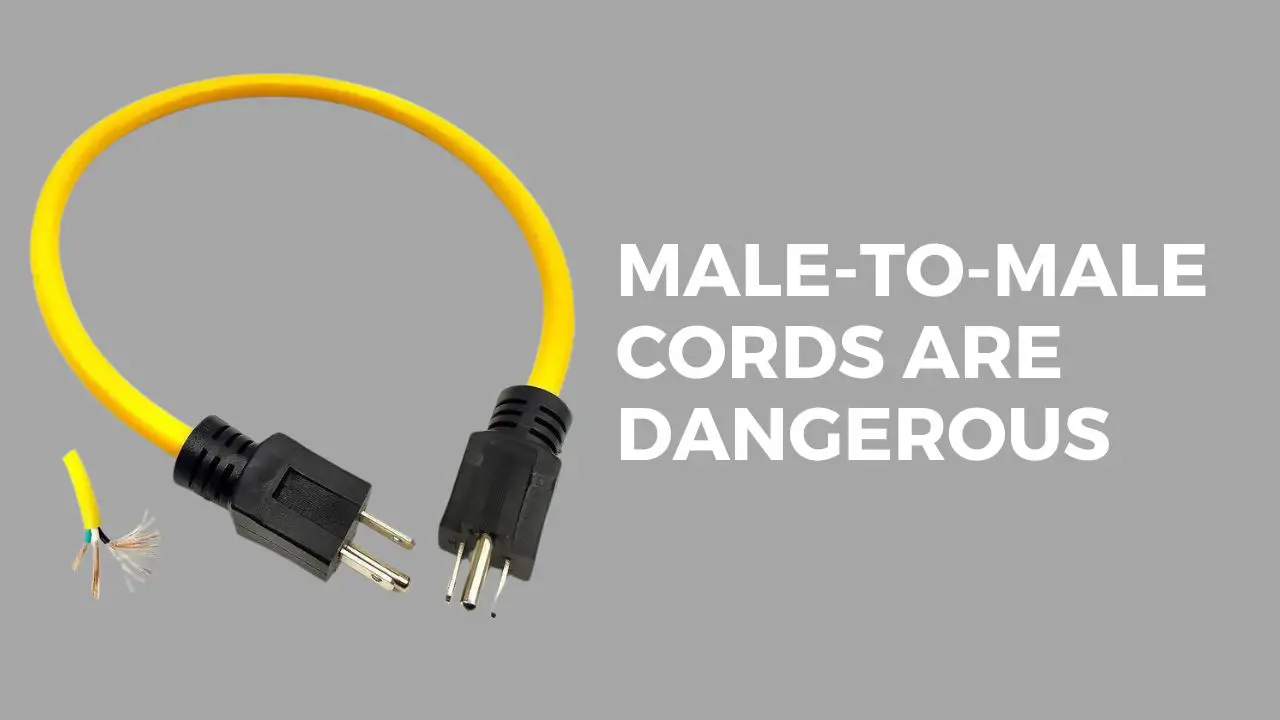During a power outage, Male-to-Male Cords may be used to bypass the need for several extension cables by connecting a generator directly to a home’s electrical system. But the use of Male-to-Male Extension Cords is actually very dangerous. The U.S. Consumer Product Safety Commission has issued a warning against their usage.
Male-to-Male Extension Cords are advertised as a means to “backfeed” energy to a home during a power outage by connecting a generator to an outlet in the home, and each end of the extension cord has two three-ring plugs. These extension cables provide a significant risk of bodily harm or perhaps death. Suicide cords and widowmaker cords are other names for male-to-male extension cables.
What is a Male-to-Male Extension Cord?
Male-to-male extension cables have male plugs on both ends, as opposed to the male plug found on conventional extension cords. If you have a male-to-male extension cable plugged into a live socket, the other end of the cord will likewise be live and carry electricity.
Electrocution may occur if the bare metal end were held. What this implies is that you run the danger of getting more than just a little buzz. You can die from the 120 volts flowing through a three-pronged male-to-male extension cord or the 250 volts flowing through a four-pronged male-to-male extension cord.
Why are male-to-male cords so dangerous?
Here are a few reasons why male-to-male extension cords are very unsafe to use:
- Someone who could be DIY fixing their home may not realize that their protective gloves are not adequate to handle the plug.
- If you are around male-to-male cords, you might be at risk of electric shock or perhaps death if you trip over these extension cables and if you are exposed to the live end.
- Electricity fed by male-to-male extension cables can flow from the house back to the utility lines on your street, potentially shocking or killing those vital personnel who may be fooled into thinking they are working on “dead” lines.
- It is a fire hazard when both the generator and the city’s power are on at the same time, as this creates an overload on the electrical system.
- If you overload the outlets on the same circuit as the generator, a fire might occur without your circuit breaker protecting you.
- The generator will be destroyed when the power grid overheats its internal components due to competition from other electrical sources.
How does a male-to-male cord work?
In the event of a blackout, some people choose to utilize a portable generator fueled by gasoline or propane and connect it to their home’s electrical system through an extension cable with three male plugs. They connect the generator’s end to their home’s electrical system via an extension cord.
One issue is that electricity might “backfeed,” or flow in the opposite direction of normal. Electricity is routed from the generator through the male-to-male extension cord and the receptacle it is plugged into before entering the electrical system of the house and powering the outlets. This is in place of the electricity coming from the municipal power lines through the circuit breaker panel.
These cables, sometimes known as “suicide plugs,” do not follow national safety regulations. Even the U.S. Consumer Product Safety Commission has published cautions on its website about this technique because the opposing end carries live electricity when put into a generator or outlet.
The government also pointed out that due to the short length of some of these lines, consumers may be forced to run their generators dangerously near to their homes, increasing the risk of carbon monoxide poisoning.
An alternative to long extension cables and expensive safety equipment like transfer switches is to utilize a male-to-male extension cord to acquire power from a generator. Electrical electricity flowing in the opposite direction of the planned flow might disable the home’s safety systems and start a fire.

